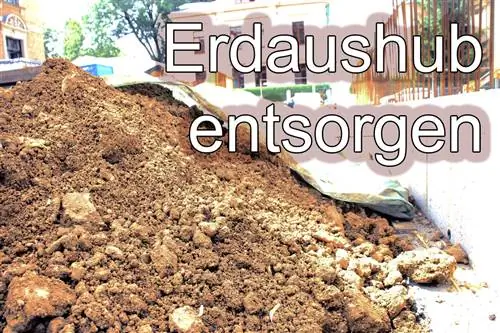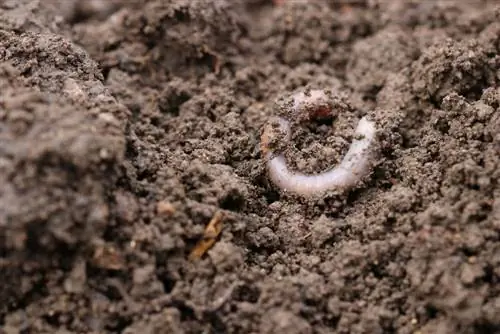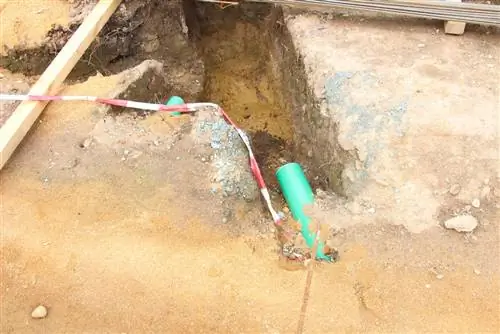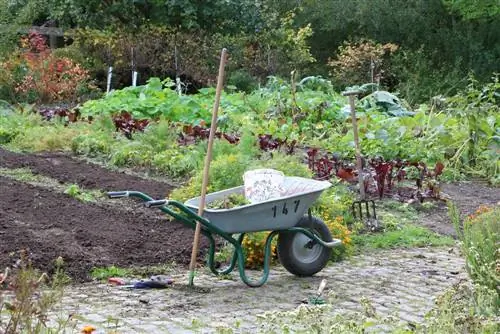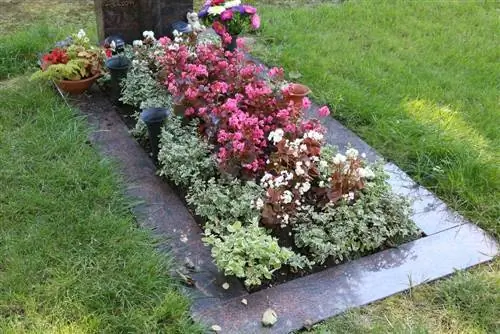- Author admin [email protected].
- Public 2023-12-17 03:39.
- Last modified 2025-06-01 06:48.
When excavated earth accumulates during house building, garden design or pool construction, many people ask themselves the question of how to dispose of it and the possible costs. All the details can be found below.
Excavation Definition
The term “earth excavation” includes soil masses made of sand, clay as well as clay and topsoil. Grass floors are also included if the turf has been removed. If it consists of plant remains, stones or roots, it is not a classic excavation in the legal sense. Only small proportions of the materials mentioned are permitted and must therefore be disposed of as earthy excavation. Excavated soil that is mixed with chemical foreign substances, such as those that can get into the ground after large amounts of fallen plaster paint or asbestos storage after renovation/renovation work, is considered contaminated or hazardous waste.
Tip:
Home and garden owners are fully liable for the soil determination. If you know or assume that there could be “forbidden” foreign materials in it, you can always be on the safe side with a soil report.
Reception and disposal methods
There are various ways to get rid of excavated soil. If companies are involved and/or the provision of utensils/transport containers is required, this will incur costs.
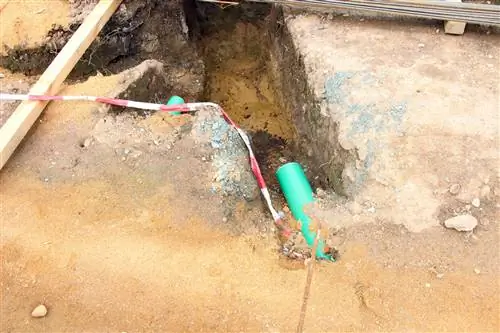
Recycling yard / landfills
It is possible to accept excavated earth at many recycling centers/landfills. This type of disposal is one of the cheapest options because the excavated soil is simply stored. Below are the costs and other details worth knowing:
- Prices for acceptance: between three and five euros per ton
- Usually only accepted up to one cubic meter of soil excavation
- One cubic meter weight: depending on the degree of humidity between 900 and 1,000 kilograms
- Price without collection and transport costs
Big Bag
So-called big bags also offer a cost-effective solution when disposing of soil. They are available in different sizes and are made of a very durable organic material. Below is the most important information:
- Available in well-stocked hardware stores, numerous recycling companies or on the Internet
- Purchase price: depending on size and provider between 3 and 7 euros
- Maximum capacity: two cubic meters
- No free disposal via municipal waste collection
- Paid disposal via municipal or private companies
- Pickup possible in almost every major city
- Pickup prices: depending on weight and region between 90 and 300 euros
Container disposal
Anyone who decides to dispose of using a container has the opportunity to collect and “cleanly” pick it up by the provider.
- Possible container sizes: 3, 5, 7 or 10 cubic meters
- Choice of self-filling or through container service
- Additional costs for external filling per 10 cubic meters: between 200 and 250 euros
- Prices: around 100 euros per cubic meter (prices vary greatly depending on the provider - price comparison is worth it)
- Advantage: Service life between one day and 14 days
Truck disposal
If masses of excavated earth are regularly produced, as is often the case when building houses, it may make sense to have it removed and disposed of by a shipping company/truck because this is where the largest quantities have to be transported away.
- Capacity: up to 26 cubic meters (trailer semi-trailer)
- Costs: between 800 and 1,000 euros for self-filling
- If necessary, plus rental of mini excavator: between 180 and 300 EUR
- Costs for external filling per 10 cubic meters: between 200 and 250 euros
- Additional transport costs for travel to and from the landfill: between 180 and 250 euros
- Additional landfill storage costs: between 300 and 500 euros
- Disadvantage: Collection of excavated earth - extensive space required when filling capacity is reached
Note:
All price information is for rough guidance and does not reflect binding prices.
Free disposal
If you want to save money on paying for the disposal of excavated earth, you can choose from free methods:
Self-utilization
The best free option is to use the excavated earth yourself. Especially when building a house, soil is often needed for the garden after completion. But even after the earth has been excavated for a pool or garden pond, topsoil remains. Especially then, further use should be considered. Until then, the excavated soil can be stored in a place on the property where it will not disturb.

Find buyers
If you have no use for excavating earth yourself, you should look for buyers for the free version. Up to ten cubic meters are often gladly accepted. Topsoil in particular is in high demand. The customer then bears the transport costs. The following possible buyers and how they can be reached:
- Inquire about house builders or in new development areas
- Gardening and landscaping companies
- Approaching acquaintances and friends
- Place ads in sales portals
- Place an offer in a regional newspaper
Note:
Excavated earth is not arable land and therefore may not be “disposed of” there. For this reason, acceptance by farmers is usually only possible in exceptional cases.
Excavation calculation
Many homeowners find it difficult to calculate the excavated earth. Just because earth was excavated for a 50 cubic meter water tank, for example, does not automatically mean that 50 cubic meters of soil will be excavated. In addition to the length, width and depth of the area, the so-called movement space also plays a role in the calculation. Below are some calculation examples to compare the quantities with the costs and disposal options.
- Sinking of rigid hollow bodies (e.g. underground tanks or pools): twice as large excavated soil, of which 2/3 remains
- Basement excavation: Example internal size 10 x 10 meters plus 2.50 meter foundation depth - add 2 meters for wall thickness, insulation and drainage=12 x 12 x 2.5 results in an excavation of 364 cubic meters, the one that remains

